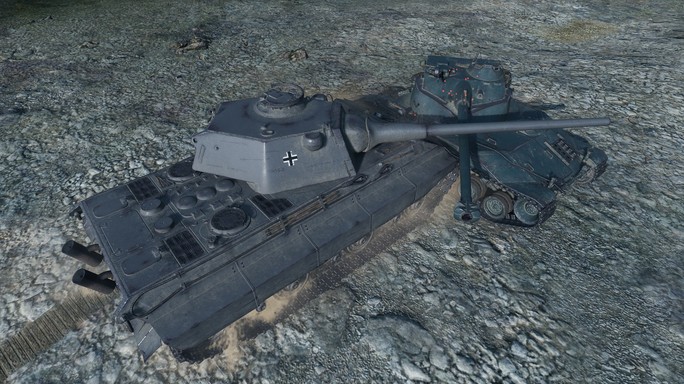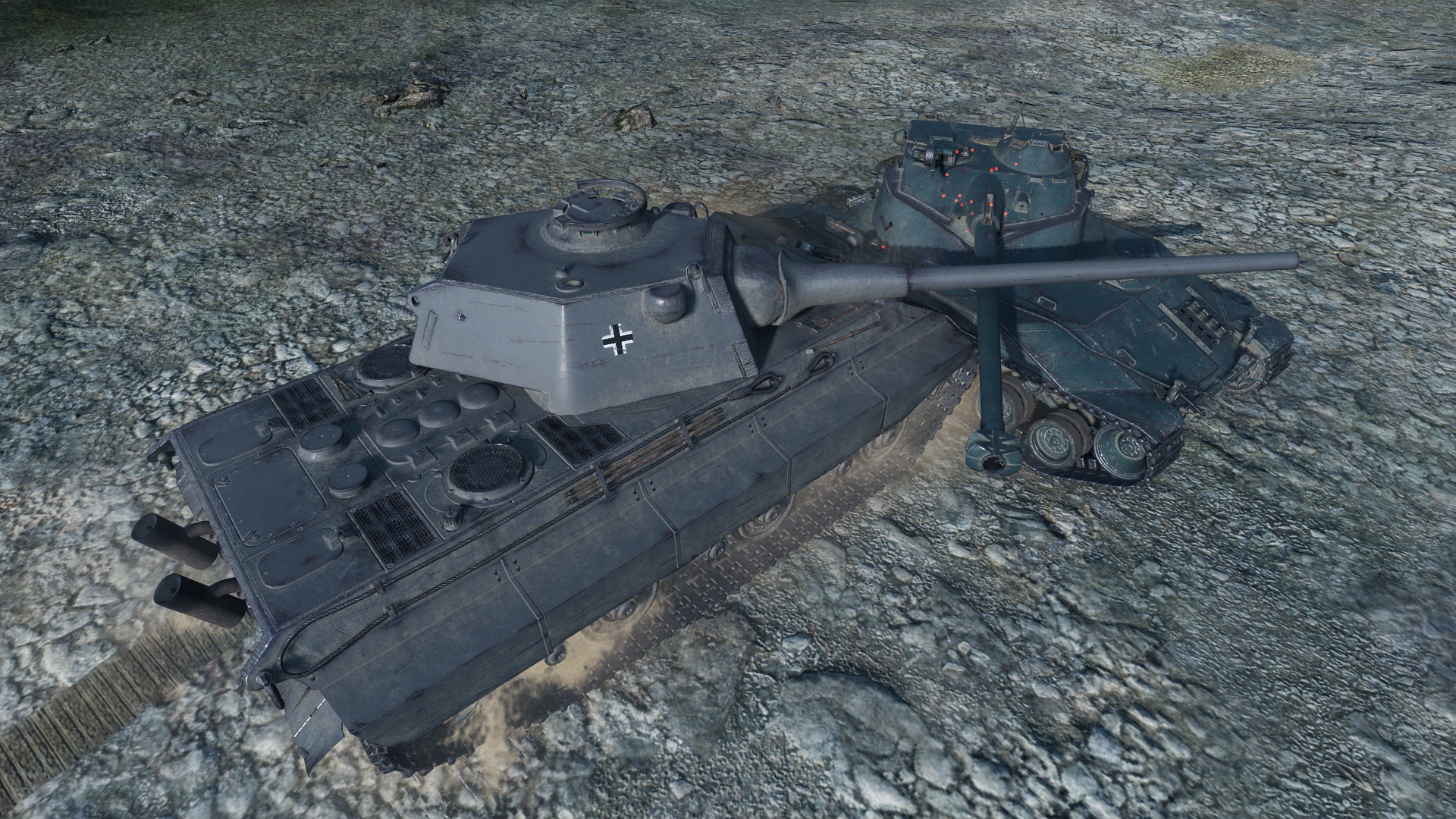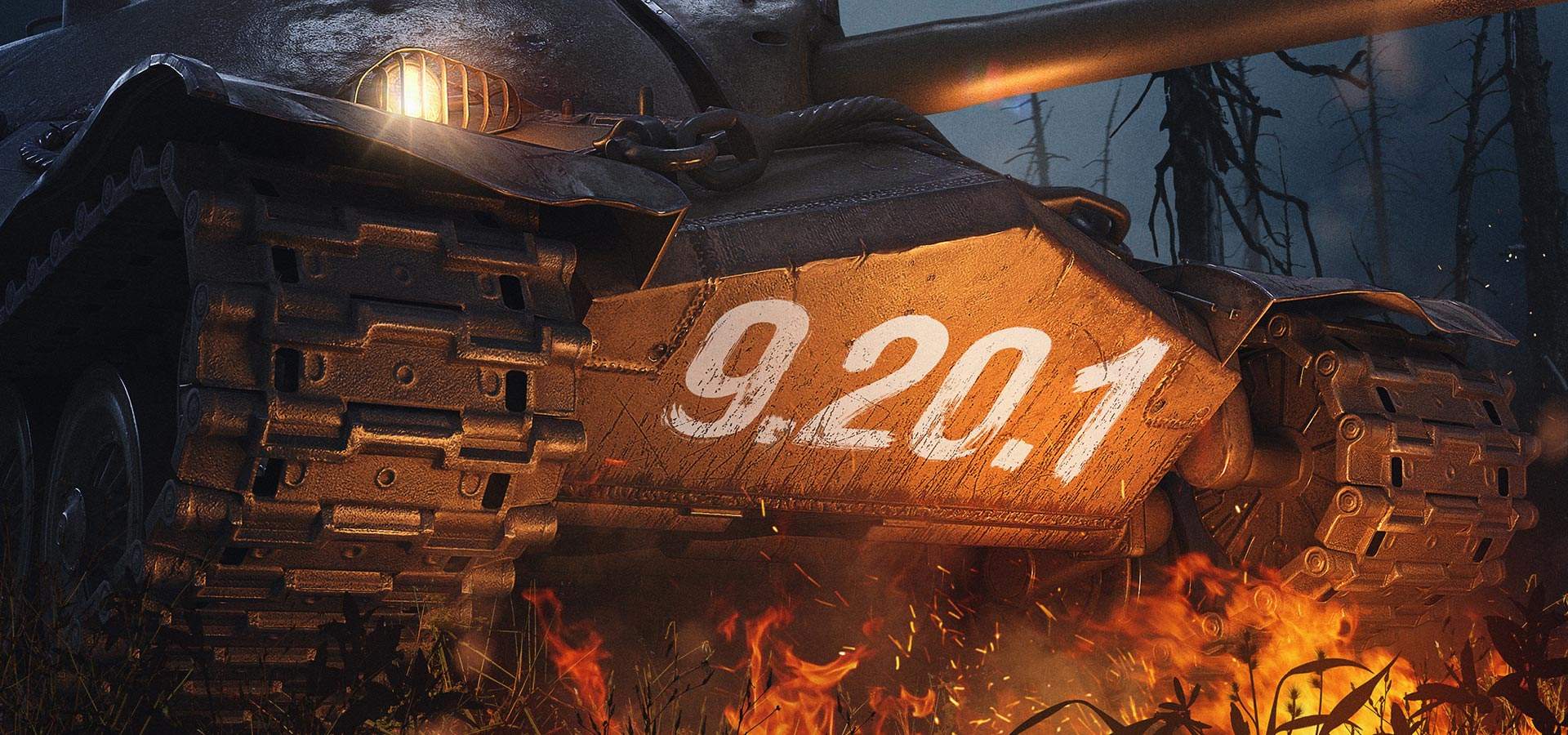Source: Portal
Have you ever played Himmelsdorf against a team that has more heavies than you? Or perhaps, you’ve watched victory slip from your fingers on an open map simply because the other camp was lucky enough to have more medium tanks in their ranks. Update 9.20.1 clamps down on these frustrating scenarios by adding an extra parameter to the matchmaker: vehicle combat roles. Simply put, we taught the matchmaker to see the difference between the Maus and IS-7, for example. Now, it balances them separately. To create two evenly assembled teams, it would place the former against other heavily armoured tanks (the E-100, Type 5 HEAVY, etc.), while the IS-7 gets to face the likes of the Т110Е5 and FV215b. Let’s take a closer look!
How does it work?
Along with balancing teams by vehicle classes (artillery, light tanks, and tank destroyers) and Platoons, the matchmaker now looks into the intended roles each tank plays in combat and ensures each side has a similar number of vehicles that play the same role. Of course, their exact number might differ, but this difference is one vehicle at the most.
Essentially, the newly-added parameter balances out the number of autoloaders, well-protected TDs, and assault heavy tanks across teams. By distributing them evenly between the two camps, the improved matchmaker addresses another frequent concern of yours. Medium and heavy tanks are no longer distributed randomly. With classes split into smaller groups that unite vehicles with a district play style, medium tanks with a certain role are pitted against each other. The same with heavies. So you can forget about one-sided matchups with, let’s say, five Bat.-Chats duking it out with five Mauses on Steppes.
We put in extra effort to make sure balancing by a vehicle’s role does not affect the overall speed of matching. So worry not, the wait time won’t change. What should improve is the overall quality of matches as vehicle roles lower the chance of a team gaining the upper hand through sheer luck. At the same time, team setups aren’t mirrored, so every battle is a unique experience where the final outcome depends largely on tactics and teamplay.
Finally, the matchmaker tries to ensure teams are evenly assembled regarding the number of Platoon players and their vehicle tiers—its primary goal. However, it currently doesn’t balance Platoon vehicles by roles. Instead, it evens out the matchups by adding standalone vehicles to teams—if the current queue composition allows for it with no increase in the wait time. For example, if a team has a Platoon of autoloader medium tanks, the matchmaker places it against a Platoon of medium tanks. Then, it tries to add standalone autoloader tanks to the other team to even out their chances at victory. If there are no autoloaders in the queue, it will create a battle to avoid longer wait times.

Vehicle Roles
If you look at the way light tanks and arty fight, there’s no immediate value in breaking these two classes into smaller packs grouped around a certain role. Light tank gameplay is built around scouting, and that’s the role they all share, regardless of whether they remain completely still to spot enemies or zoom around the map. A particular set of LTs won’t make the enemy team superior to yours as long as both of you have them in similar numbers, and the matchmakers ensure you do. It’s the same story with SPGs: they all play as long-range support vehicles.
TDs, medium and heavy tanks are a whole other story. Let’s take medium tanks with powerful guns and moderate armour, for example. These are designated support vehicles. Their peers, with strong protection but average mobility and firepower perform best in an attack role. There’s a whole bunch of medium tanks sporting autoloader guns, and they can dismantle an enemy in no time. Finally, others perform equally well in more than one role, which makes them fairly universal.
Having analysed the key parameters and combat performance of TDs, medium and heavy tanks, we outlined primary roles for each class at Tiers VIII–X. The structure you see below is not final. We want to hear your thoughts on the classification and criteria we put at its core (armour, firepower, and mobility). Following your feedback, we might revise it and consider introducing roles for mid to lower tiers.
But Wait, There’s More
Improvements to the matchmaker don’t end with the introduction of vehicle roles. Along with adding them, we addressed some of your most vocal requests:
- Better chances of getting ranked at the top of the list for Platoon players:Initially, their chances of playing at the top were reduced to avoid upsetting scenarios with Platoons singlehandedly deciding the battle outcome. In direct response to community feedback, we’re raising them slightly so that you and your Platoon mates can fight at higher tiers once in a while. This won’t cause any drastic changes to the state of Random Battles, but offers a more varied experience to Platoon players.
- Equal chances of getting ranked in the top/middle/bottom of the list for different vehicle classes: You might have noticed that heavy and medium tanks would end up in single-level battles way too often, while arty and TDs tended to get ±2 and ±1 setups. We tweaked the matchmaker, evening out the odd for all vehicle classes.
- Optimized team assembly logic: After some extra tuning, you’ll see more 3/5/7 and 5/10 teams, which should provide for a more enjoyable experience.
- More Grand Battles: We increased the chance of getting matched in a Grand Battle, so that more players could playtest the new format.
Hai mai giocato in Himmelsdorf contro una squadra ben più pesante della tua? O magari, hai visto la vittoria sfuggirti di mano in una mappa aperta solamente perché la squadra nemica poteva contare più carri medi nei propri ranghi? L’Aggiornamento 9.20.1 elimina queste frustranti possibilità aggiungendo un parametro aggiuntivo al sistema di matchmaking: il ruolo di combattimento dei veicoli. In poche parole, abbiamo programmato il matchmaker per tenere in considerazione delle differenze tra un Maus e un IS-7, ad esempio. Adesso li bilancerà separatamente. Per creare due squadre bilanciate, piazzerà il primo contro un carro equamente corazzato (E-100, Type 5 HEAVY, ecc.), mentre l’IS-7 verrà assortito con carri simili, come il T110E5 o l’FV215b. Diamo un’occhiata più da vicino!
Come funziona?
Oltre a bilanciare le squadre in base alle classi dei veicoli (artiglierie, carri leggeri e cacciacarri) e in base ai Plotoni, il matchmaker adesso prenderà in considerazione anche il ruolo in combattimento di ogni carro e si assicurerà che il numero di carri con lo stesso ruolo sia lo stesso in ogni squadra. Certo, il numero potrebbe non essere esatto, ma la differenza sarà al massimo di un singolo veicolo.
Essenzialmente questi parametri bilanciano il numero di mezzi dotati di caricatore automatico, di cacciacarri ad alta resistenza e di carri pesanti d’assalto nelle due squadre. Distribuendoli equamente tra le due fazioni, questo matchmaker migliorato risolverà anche un secondo problema di interesse pubblico: i carri medi e pesanti non verranno più distribuiti casualmente. Distribuendoli equamente tra le due fazioni, questo matchmaker migliorato risolverà anche un secondo problema di interesse pubblico: i carri medi e pesanti non verranno più distribuiti casualmente. Dato che le classi verranno suddivise in gruppi più piccoli in base allo stile di gioco, i carri medi con un certo ruolo verranno assortiti gli uni contro gli altri. Stessa storia per i pesanti. Da oggi, ad esempio, potrai scordarti abbinamenti con cinque Bat.-Chat da una parte e cinque Maus dall’altra nella mappa Steppe.
Abbiamo fatto tutto il possibile per fare in modo che il bilanciamento dei ruoli non determinasse un rallentamento della velocità di creazione delle partite. Pertanto non avete di che preoccuparvi: i tempi di attesa non cambieranno. Ciò che dovrebbe migliorare è la qualità media delle partite, poiché il nuovo sistema riduce le possibilità che una delle due squadre parta avvantaggiata per puro caso. Allo stesso tempo, gli schieramenti delle squadre non sono specchiati, pertanto ogni battaglia è unica e il risultato finale dipende fondamentalmente dalle tattiche e dal gioco di squadra.
Infine, il primo obiettivo del matchmaker è quello di provare a creare squadre equilibrate in termini di numero di Plotoni e livello dei loro veicoli. Tuttavia, allo stato attuale, non vengono bilanciati i ruoli dei veicoli dei Plotoni. Pertanto, il matchmaker cerca di equilibrare le squadre aggiungendo veicoli singoli agli schieramenti, se l’attuale composizione della coda lo consente senza incremento dei tempi di attesa. Ad esempio, se una squadra dispone di un Plotone di carri medi con caricatore automatico, il matchmaker schiera contro di essi un Plotone di carri medi. A quel punto cerca di aggiungere carri singoli con caricatore automatico alla squadra avversaria, per cercare di pareggiare le possibilità di vittoria. Se nella coda non sono presenti carri con caricatore automatico, creerà direttamente una battaglia per evitare di allungare i tempi di attesa.

Ruoli dei veicoli
Considerando il ruolo dei carri leggeri e delle artiglierie in battaglia, ci si rende conto che non ha senso suddividere queste classi in gruppi più piccoli con ruoli specifici. Lo stile di gioco dei corazzati leggeri ruota attorno all’avvistamento dei veicoli nemici. Tutti i carri leggeri condividono questo obiettivo, indipendentemente dal modo in cui lo fanno, rimanendo completamente fermi o spostandosi rapidamente sul campo di battaglia. Una particolare dotazione di carri leggeri non farà in modo che una squadra risulti superiore all’altra, fintanto che il numero di tali veicoli in entrambi gli schieramenti sia simile. Lo stesso ragionamento si può estendere alle artiglierie semoventi: il loro ruolo è sempre quello di fornire supporto sulla lunga distanza.
Cacciacarri, carri medi e carri pesanti sono una storia completamente diversa. Ad esempio prendiamo in considerazione i carri medi con cannoni potenti e corazzatura intermedia. Questi mezzi sono progettati per il supporto. Gli equivalenti carri medi dotati di elevata protezione ma mobilità e potenza di fuoco mediocre, si comportano meglio come carri d’assalto. Poi c’è un gran numero di carri medi dotati di caricatori automatici, in grado di distruggere i nemici in un men che non si dica. Infine, alcuni di essi sono universali, poiché sono in grado di assolvere in maniera ottimale a più ruoli.
Con l’analisi dei parametri principali e delle prestazioni in combattimento di carri medi, pesanti e cacciacarri, abbiamo delineato i ruoli primari per ogni classe dal livello VIII a X. La struttura sotto non è quella finale. Vogliamo sapere cosa ne pensate sulla classificazione e sul criterio utilizzato (corazzatura, potenza di fuoco e mobilità), perché con i vostri pareri possiamo correggere tutto, e magari considerare l’introduzione dei ruoli a livelli intermedi e inferiori.
Aspetta, c’è dell’altro
I miglioramenti al sistema di matchmaking non finiscono con l’introduzione dei ruoli. Insieme alla loro aggiunta, ci siamo occupati di alcune delle richieste più attese:
- Probabilità superiori di essere in cima alla lista per i giocatori in Plotone. Inizialmente, le loro probabilità di giocare facendo parte della prima parte dello schieramento sono state ridotte per evitare scenari frustranti con Plotoni in grado di decidere da soli le sorti della battaglia. In risposta al feedback della comunità, aumenteremo queste probabilità leggermente, in modo che chiunque possa combattere tra i migliori carri con i propri compagni di Plotone. La modifica è minima, quindi non causerà cambiamenti drastici allo stato delle Battaglie casuali, ma offrirà un’esperienza più variegata per i giocatori in Plotone.
- Pari possibilità di finire in cima, in mezzo o in fondo alla lista per veicoli di classi differenti.Potreste aver notato che i corazzati medi e pesanti siano in grado di finire in battaglie da un solo livello più spesso, mentre le artiglierie e i cacciacarri tendano a finire in battaglie con schema ±2 e ±1. Abbiamo migliorato il matchmaker dando possibilità eguali per tutte le classi dei veicoli.
- Ottimizzazione della logica di assembramento delle squadre. Dopo qualche perfezionamento ulteriore, vedrete più squadre con schemi 3/5/7 e 5/10, permettendo un’esperienza di gioco più piacevole.
- Più Gran battaglie: Abbiamo deciso di aumentare la possibilità di finire in una Gran battaglia, in modo che i giocatori possano provare di più questo nuovo formato.
Abbiamo lavorato molto su questi miglioramenti e siamo impazienti di sapere cosa ne pensate a riguardo. La tua collaborazione è cruciale per aiutarci a migliorare la tua esperienza di gioco! Il vostro input è cruciale per permetterci di far evolvere il sistema del matchmaker, quindi lasciateci dei suggerimenti sul forum e sentitevi liberi di fare domande.
